By Patricia Reid, Collections Manager
2023 is the 200th anniversary of the opening of the Champlain Canal, which connects Lake Champlain to the Hudson River and the rest of the New York State canal system. In commemoration of this important anniversary, here at the Museum we are doing an inventory of our collections relating to canalboat shipwrecks in the lake. Today, I want to share an interesting story about one of these canalboat wrecks, the sailing canalboat O.J. Walker.
(Top image: Line drawing of the Sailing Canal Boat O.J. Walker)
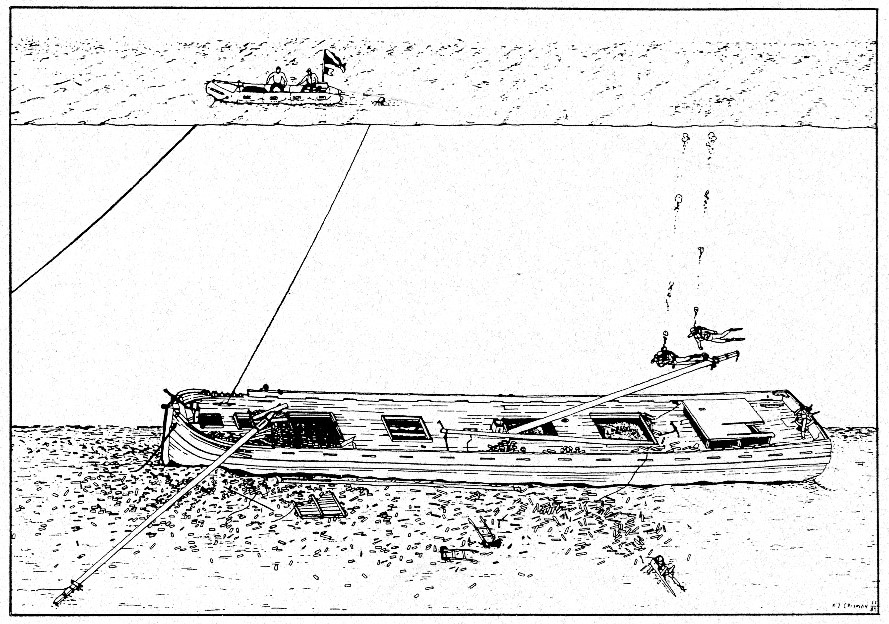
O.J. Walker was built in 1862 in Burlington, Vermont, and was named after one of the region’s leading merchants, Obadiah Johnson Walker. The vessel was a cousin to General Butler, as both were schooner-rigged sailing canal boats. O.J. Walker had a working career of 33 years and was employed hauling heavy cargoes. Like so many other canal vessels, it had the dual purpose of a work boat and family living quarters (and as we’ll see later, also played a unique role as a touring vessel for musicians!). The vessel sank in May 1895 after a severe windstorm caught the crew off guard. As O.J. Walker began to leak, the crew disembarked into a small rowboat. All survived, but the vessel was lost in about 65 feet of water near Burlington.
O.J. Walker is now one of 12 vessels in the Vermont Underwater Historic Preserves, an underwater scuba park which provides public access for divers to some of the lake’s historic shipwrecks from May to October each year. Preparing to add O.J. Walker to the preserves required complete documentation of the site and removal of select artifacts, a process undertaken by Museum archaeologists from 2000 to 2002. A total of 27 artifacts were removed from the site and conserved at the Museum. These include several blocks (part of the ship’s rigging, a system of two or more pulleys threaded with lines), a few pieces of dishware from the stern cabin (where the family lived while onboard), and some bricks (the cargo onboard at the time of the sinking). In addition to these artifacts, the O.J. Walker Collection also includes photographs and underwater footage of the shipwreck in situ, as well as field notes and artifact drawings from the excavation and conservation processes. More information about the O.J. Walker Collection is available on the Museum’s website.
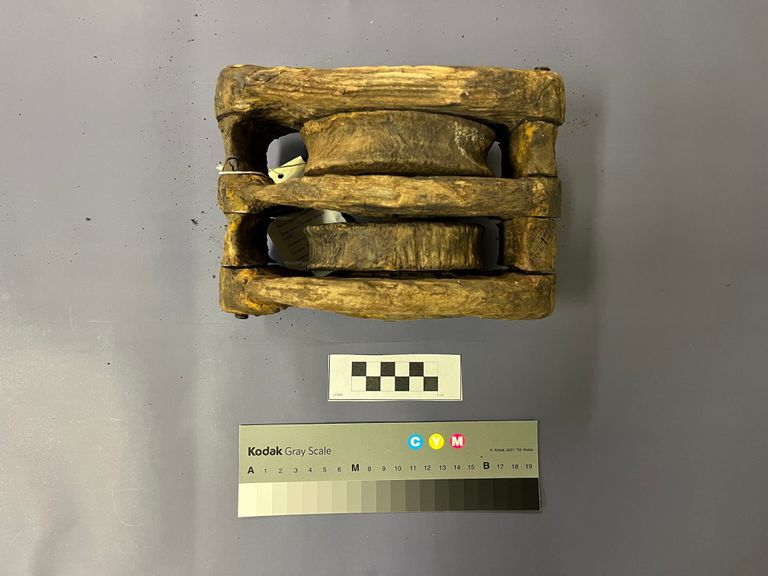
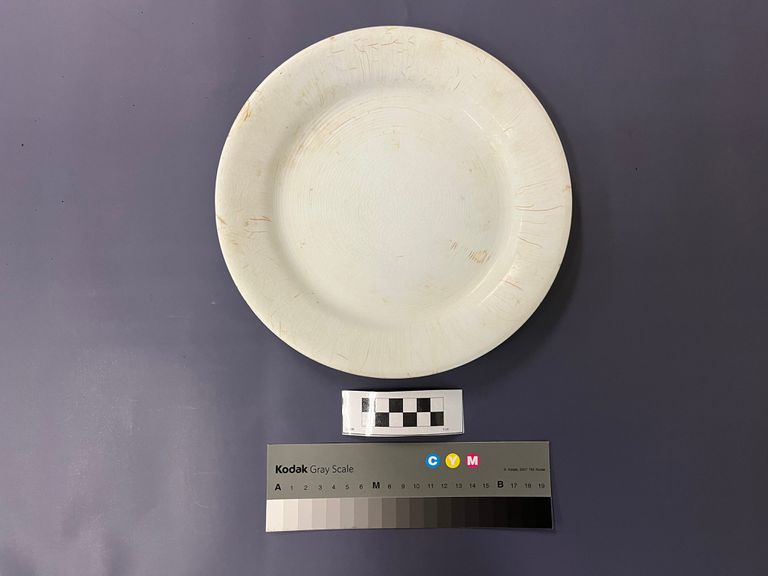
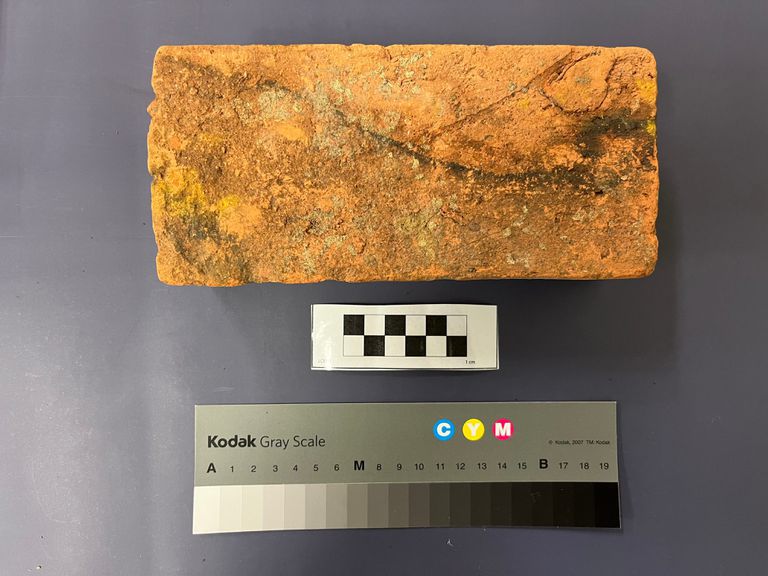
Left image: Double Sheave Block, 00.01.19 / Middle image: Undecorated Plate, 00.01.14 / Right image: Brick, 02.03.05. All artifacts from the O.J. Walker Collection, Lake Champlain Maritime Museum.
One artifact of special interest is a nearly complete cornet, pictured below. For our research team, this cornet has inspired scenes and theories of the family spending an evening onboard sharing music together.
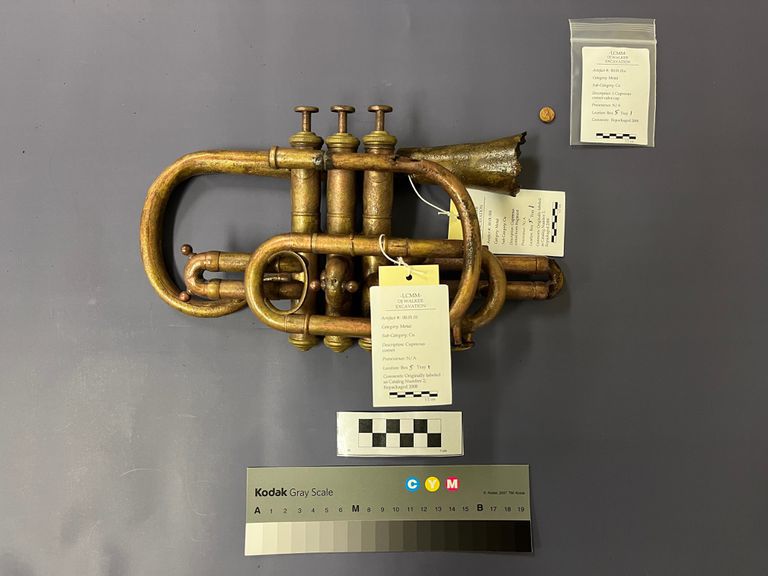
Recently, we learned of a new story about O.J. Walker which brings new life to this musical piece of the vessel’s history. Kris Jarrett, Director of the Sherman Free Library in Port Henry, NY, found some clippings in a scrapbook in the Library’s Collections which detail a grand tour that a group of musicians enjoyed onboard O.J. Walker in 1884. The clippings came from Scrapbook A of the Library’s Woodbridge Collection, which is the first of five scrapbooks assembled by Reverend William Reed Woodbridge, who served as the first Rector of the Christ Episcopal Church in Port Henry, NY, from 1872 to 1892.
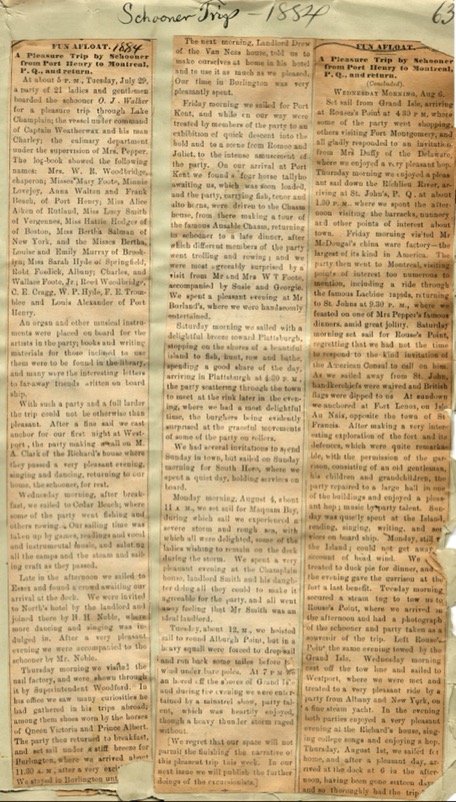
The scrapbook details the journey of twenty-one young people, musicians and actors hailing from around the Champlain Valley, as they journeyed onboard O.J. Walker from Port Henry, NY, to Montreal, Quebec, over several days in late July and early August 1884. Among the tales of reading, singing, and writing enjoyed onboard was the recollection of a special “exhibition of quick decent into the [cargo] hold and to a scene from Romeo and Juliet.” Also detailed in the clippings are several evenings of song and dance the group hosted at various ports along the way.
Perhaps the most powerful phrasing in the piece comes at the end, which for me makes our cornet that much more special: a toast to “…memories of perfect harmony among the party, of beautiful songs, kind words, cheerful greetings, mutual kindnesses and courtesies, which will cause the recollection of the schooner trip to live in the memory of each one like a music that can never be forgotten” (Page 64, Woodbridge Scrapbook A, Sherman Free Library Collection).
We’ll never know if the 1884 group used the cornet during their trip, or even who it may have belonged to. But both this scrapbook and the cornet are powerful reminders of the uniquely human ability to connect through song and melody – even over the centuries.
Want to learn more about our collections, or have something you’d like to donate? Check out our Collections Hub, which has information about our largest and most frequently accessed collections. To contact our Collections team about a donation or loan, email PatriciaR@lcmm.org.
Big thanks to the Champlain Valley National Heritage Partnership, who have generously funded the 2023 inventory of our canalboat collections.
And make sure to mark your calendars for summer 2024, when we’ll open a new exhibit about Lake Champlain’s canalboats! The cornet featured in this blog will be one of the artifacts on display.


Very impressive and inspiring. The online brass instrument community would probably quickly have info about that model horn. The most authoritative cornet instruction manual is still the Arban book from 1864.
Great lead for future research! Thank you, Brian!
I know that bricks, and blocks, and china are all inspiring finds for archaeologists – I can’t imagine what their reaction to finding this cornet must have been! Your piece inspires me to come back next season to soak in the canal boat history. Happy Holidays ~
Love to hear it and much agreed, Barbara! Thanks for your note. We look forward to welcoming you at the Museum in 2024! Happy holidays.